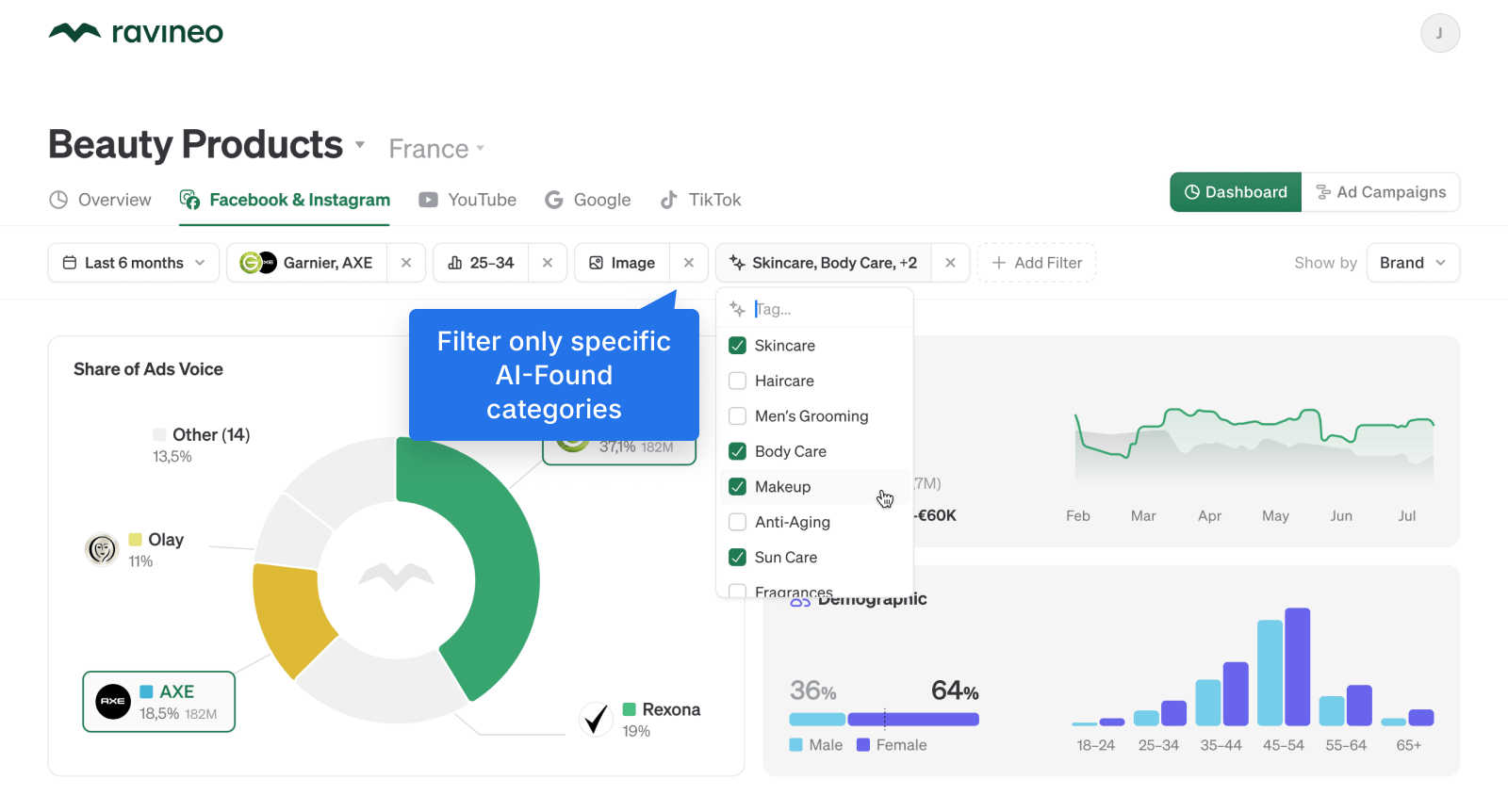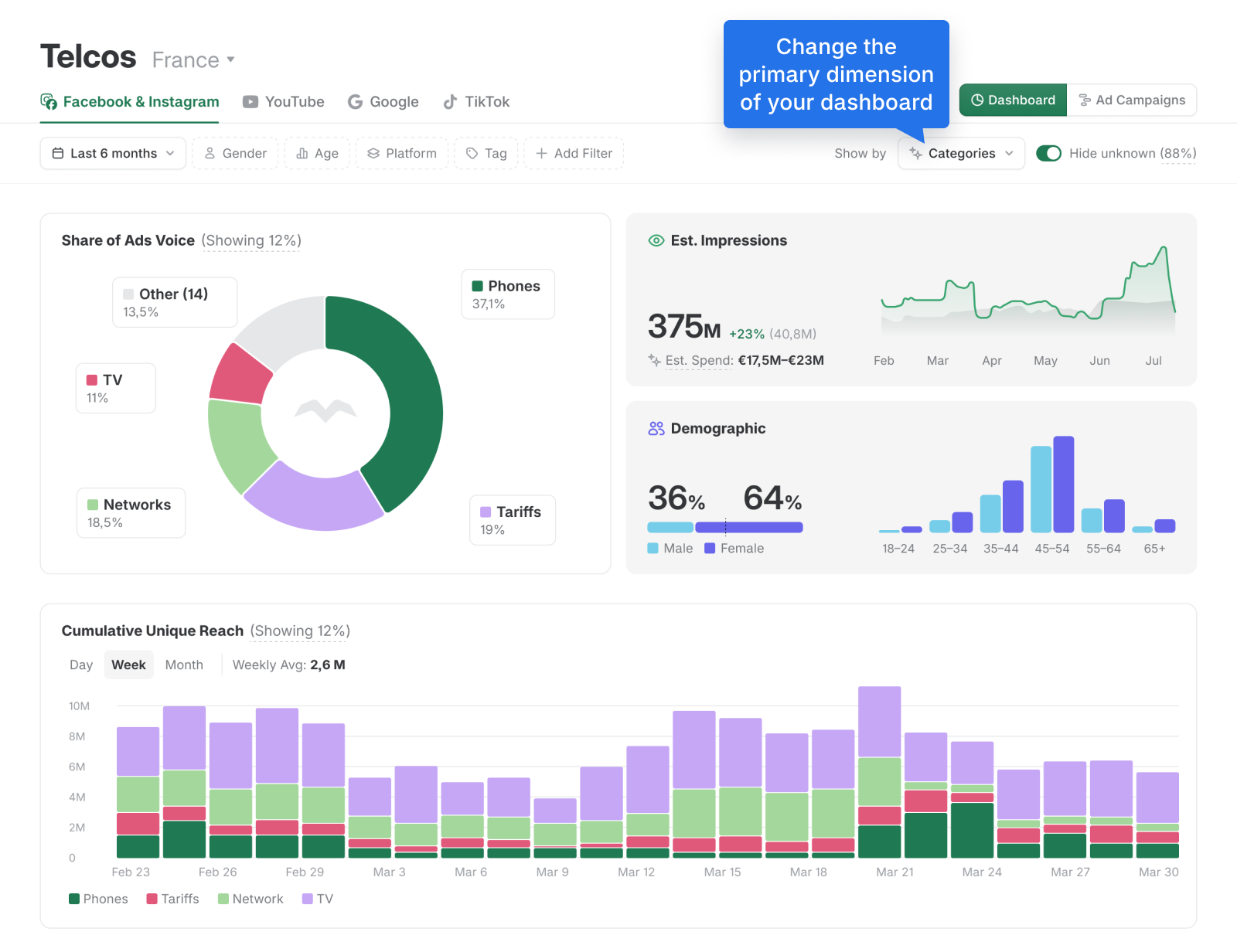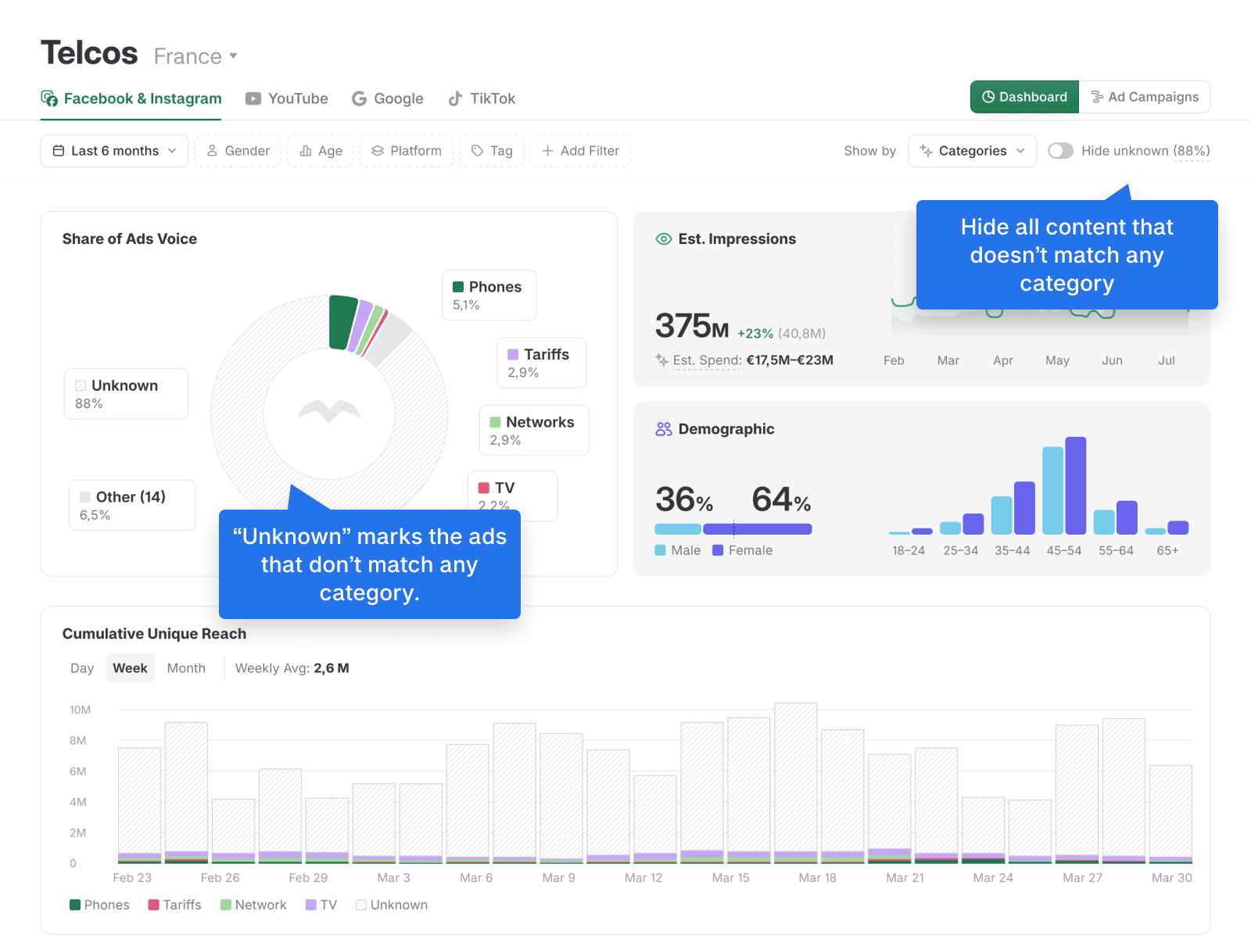Categorise and label ads with AI and keyword matching
To make better sense of all competitor ads, you might want to look at sorting the ads into some sort of categories.
We support 2 ways of doing that, both are fully automatic:
- AI Categorization
- Keyword matching

AI Categorization
We can run all ads – yours and competitors’ – on your dashboard through an AI engine that labels and categorizes ads into your custom-defined categories.
For example, if you manufacture personal electronics, you would end up with tags on every ad like phones, tablets, smartwatches, etc. This allows you to look for, filter, observe, and export very specific sets of ads.
These models are smart – we can make it very granular and customize it exactly to your needs.
Get in touch with us to gain access to AI categorisation.
We usually use the Gemini AI models from Google for most content.
Viewing Dimensions
By default, most Ravineo dashboards compare brands. This is reflected in the Share of Ads Voice pie chart, Cumulative Unique Reach over time, and the main comparison table.
You can change the primary dimension of your dashboard (“Show by”) to shift the focus of your data.
For example, you can switch to viewing the categories within ads as the main focus. Clients often use this to compare product categories, external retailers marketing their products, and more.

Keep in mind that your category system may not cover all ads on the dashboard, meaning some content won’t match any category. In some cases, this “unknown” category may dominate, making it harder to compare actual categories.
To manage this, you can use the “Hide unknown” switch to show or hide the “unknown” portion in the charts.

Keyword matching
In simpler cases, you can categorize content or advertisers by using keywords found in the ad or advertiser information. For example, if you’re a manufacturer of personal electronics, you can use this method to categorize ads by e-shops that sell your products and run ads for them.
By setting these e-shops as the primary dimension (using the “Show by” switch), you can focus on their advertising activity. Combine this with a filter for AI-detected product categories (like tablets), and you’ll be able to see which e-shops are advertising your tablets the most and how accurately they are doing so.
Ravineo & Meta Metrics Comparison
Metric | Ravineo | Meta (Facebook & Instagram) |
|---|---|---|
Reach Calculation | Cumulative Unique Reach: Sum of the unique reach for each individual ad. Captures the total exposure across multiple ads. | Deduplicated Unique Reach: Tracks the actual number of distinct individuals reached across multiple ads, eliminating duplicates. |
Example (10 Ads) | If 10 ads each reach 1M people, Ravineo reports a total reach of 10M. | Meta would show a deduplicated reach of, for example, 1.4M unique people across the 10 ads. |
Deduplication | No Deduplication: Summing up the unique reach of each ad provides a standardized comparison of total exposure. | Deduplication Applied: Meta deduplicates users across ads within their platform, removing repeat counts of the same individual. |
Share of Ads Voice | Represents the total attention captured by summing the reach of all ads. Gives a comprehensive view of campaign reach. | Focus on Unique Reach: Meta’s deduplication aims for exact precision within the Meta ecosystem, reporting the total unique exposure. |
Comparison Strength | Cross-platform, comprehensive: Share of Ads Voice works across multiple platforms, giving a full-market view. | Platform-limited: Meta’s reach data is specific to its ecosystem, limiting comparisons outside of Facebook/Instagram. |
Data Limitation | Cross-Ad Comparison Possible: Ravineo does not deduplicate across multiple ads due to privacy and technical constraints. | Single-Ad Focus: Meta focuses on deduplicating reach within individual campaigns but doesn’t offer comprehensive cross-platform views. |